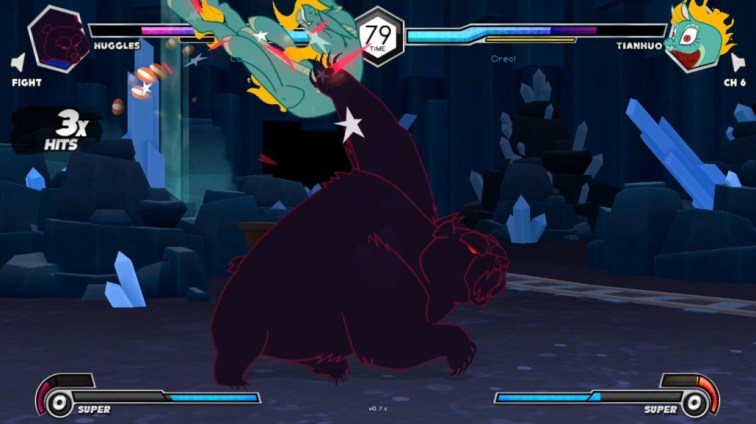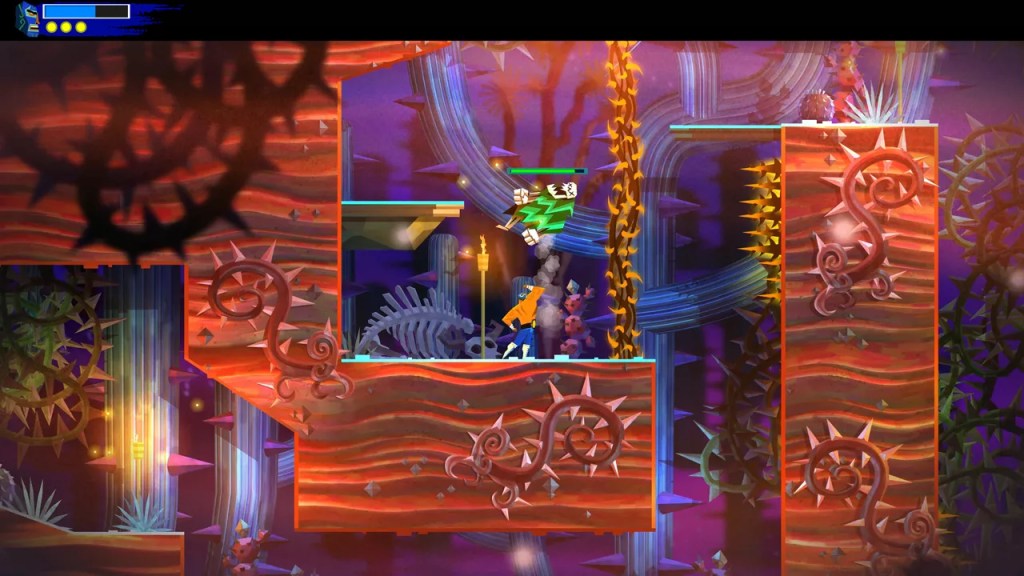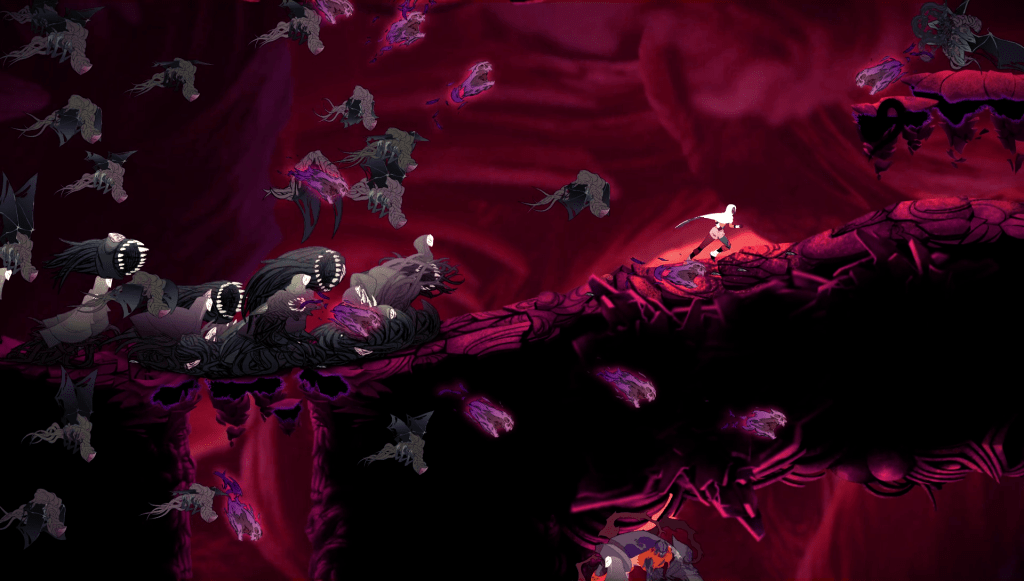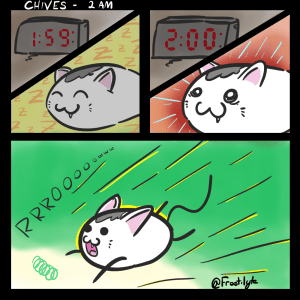Cats (2019) is quite possibly the worst movie I’ve ever seen.
I know that I normally start these posts off with a meandering summary of what’s been going on, but I just watched Cats (2019) and am still in disbelief that it was as bad as it was. This movie had every advantage going for it, but is a rotten turd entirely because it’s a musical where the music is constantly out of time and the dancing is almost never on beat. There is thousands of years of musical theory, but for some reason director Tom Hooper just threw that out the window because Hollywood knows best. The result is a musical that is a failure by every metric.
Anyway, video games.
Blog
Views: 765
Visitors: 535
Likes: 86
Comments: 32
Best Performer: The Awesome Combo Trainer of Them’s Fightin’ Herds
August was a bit of an unusual one compared to my historic stats, but I’m fairly certain it represents a trend I’m going to see more of going forward. The total views is on the lower side relative to the rest of the year, but the number of visitors is on the higher side. This means that more people are reading my site but there are fewer instances of someone clicking on another article afterward. While a lower attachment rate isn’t great, I have seen a lot of dividends coming from increased visibility via different social networks. This has also lead to higher search engine results, which is the biggest driving force for the unique traffic spike. All said, if this continues then I’m likely to keep seeing lower attachment rates, but that shouldn’t come at a cost to site traffic.
I think this whole change is represented quite well in the best performing article this month. Since I began the month in review series the best performing post was always one that was released in the month I was looking back at. However, an article I wrote in July was my best for August. My hope is that this will be a recurring trend, but only time tell if that is the case.

On a more personal note, as somewhat of a self fulfilling prophecy my predicted bombardment from work happened over August. All four projects that I was assigned to went live last month, plus there were a bunch of projects I wasn’t directly related to that I needed to support. As such I was extremely busy with numerous night time deployments. This led to burnout that manifested as me becoming extremely sick for a couple of days. Thankfully that’s all sorted now.
Unfortunately, that has once again left me a bit behind on blogging. I, once again, have nothing planned for the upcoming weeks and that doesn’t exactly sit well with me. There are a few ideas I’m tossing around based on my recent time playing both Wildermyth and Guilty Gear Strive, but we’ll have to see if they manifest into anything.
Also while editing this post I realized that the blog is four years old now, so that’s a neat milestone to have passed.
Gaming
Guilty Gear Strive
To almost no one’s surprise, I’m sure, I’ve been playing Guilty Gear Strive. It’s a lot of fun when it works. It’s a sad state of affairs, but I actually had a more friction-less experience playing Them’s Fightin’ Herds, a game made by about ten people, than I’ve had with Strive. The online interface is far too busy to be effective and the game takes a painful amount of time to establish a connection to the server. This, in addition to spending almost two hours trying to figure out how to get my arcade stick to work with the game did not leave a great first impression.

However, once I finally got everything working the game was a lot of fun. Like a LOT of fun. The characters and music are so butt rock and Strive has streamlined aspects of previous Guilty Gear titles such that it is far easier to get into than any past game in the franchise. This is unfortunate for series veterans, but it has made the experience as a new player quite a positive one, doubly so because the game has so much aesthetic appeal to me.
One thing that has been unusual about playing Strive is the size of the player base. Fantasy Strike and Herds both have relatively small player bases. This meant that when I was a newcomer there was a very long period of time where I’d lose every single match as I was learning the game. However, Strive has a fairly large active player base and as such I’ve had the opportunity to demolish some lower skill players while barely understanding the majority of the unique mechanics. I’m not sure if this is better or worse than my experience with smaller indie fighters, but it has certainly been an interesting change of pace.
Guacamelee! 2
I finally got around to playing the sequel to the indie darling Guacamelee! and I have to say I wasn’t super impressed with the sequel. By all means it is a better game, but the majority of what Guacamelee! 2 does is the same set of things that the original game did. In this way it feels like a very safe sequel that took small steps to iterate on a few of the shortcomings of the first game but ultimately doesn’t dramatically change anything. By all accounts it is a fine game, a great game even, but it’s not as impressive to see a dog do the same tricks over and over again.

I feel like a bit of a dick for being somewhat negative here because Guacamelee! 2 is a great game. It’s just hard for me to look past the game retreading the overwhelming majority of the ground that the previous game thoroughly explored. Whenever this sort of thing happens I’m never sure if I should evaluate the sequel in a vacuum and praise all of its successes independent of what came before it, or if I speak candidly about how the experience felt a lot like replaying the original game. This is a question that I’m not certain I’m smart enough to speak intelligently about so I suppose I’ll just leave it at that for now.
If you haven’t played Guacamelee! yet but are interested in an action-platformer with insane air juggling combos then I’d whole heartedly recommend checking out Guacamelee! 2. It successfully iterates on a few of the first game’s shortcomings and creates a more compelling experience. It’s just one that is better enjoyed without knowledge of what came before.
Sundered
Sundered is a game that tries to marry the two most overused game genres in indie development: rogue-likes and metroidvanias. While I have no short supply of games from either genre that I’ve enjoyed I didn’t find their union in Sundered to be particularly compelling.
There are a number of reasons for my overwhelmingly negative experience playing Sundered, but the biggest culprit is the game’s visual design. In screenshots Sundered is an absolutely gorgeous game. The hand drawn artwork from Thunder Lotus Games looks incredible and leads to the game featuring a number of evocative locations, enemies, and bosses. The problem with this is that everything is so detailed that whenever you enter combat it quickly becomes impossible to parse what is happening.
Just imagine if all of this was dog piling you instead of being nicely framed because this is a press kit screenshot.

There is so much detail and little is being done to help the player with keeping track of important information. In games like Hollow Knight or Enter the Gungeon high levels of contrast are frequently used to help direct the player’s eyes to important information. Hollow Knight does an especially good job with this by keeping many of the game’s backgrounds a shade of blue while featuring numerous enemy designs that include white and orange. Similarly, Gungeon almost exclusively uses the colour red for enemy projectiles while using backgrounds that contrast with the colour red. This helps players parse what they’re looking at, especially during the more difficult and visually busy moments in either of these games.
This wouldn’t necessarily be a problem if the hits in Sundered didn’t come hard and fast. Your character is weak as hell and there is an expectation that you’ll dodge out of the way of the majority of attacks. With how often the visuals of the game work against the player this makes Sundered feel unnecessarily punishing.
There’s also the issue of how the map and enemy encounters are handled. Key point on the map are set in stone, but the hallways and corridors that connect them are randomly generated each time you enter an area. This means that navigation is made unnecessarily complicated because there are no paths for you to remember each time you pass through an area. Instead you’re made to stumble clumsily from place to place through maps filled to the brim with indistinct features and nonsensical design.
The developers also decided that filling the map with enemies would be too difficult, so they periodically spawn in around the player to provide some pushback while you’re exploring. This means that you can get hit with enemies in places that are particularly challenging to navigate, which leads to a lot of undue frustration. The game also summons large enemy hordes every five to ten minutes and this entirely halts progression while you clean up the clusterfuck. What I really love about this is that several enemies will travel through the walls, so you can’t even set up choke points to deal with the chaos. Instead, you’re forced to just take it as it comes.
If it wasn’t already abundantly clear I think Sundered is a pile of hot garbage. I’m still amazed that this game came from the same studio that made the masterful Jotun and it has shaken my confidence in them. Perhaps Jotun was a one time stroke of genius that was born out of luck instead of a game that was carefully designed and developed. The complete train wreak of Sundered would certainly indicate as much.
Wildermyth
I want to close out this month on a positive, so we’ll finish with Wildermyth.
Wildermyth is kind of like a rogue-like RPG. It’s rogue-like in the sense that characters are created with random traits and the stories and events you’ll encounter throughout a campaign are only loosely scripted. If you and I were to start one of the story campaigns the overarching plot points and goals we worked toward would be the same, but the journey for how we got there should be mostly unique. Obviously there isn’t an unlimited quantity of randomized nonsense that the story-telling engine can come up with, but I think the game does a fairly good job at creating personalized journeys. This allows for Wildermyth to create really unique and personalized stories for every player who spends time with it.

One of my favourite stories thus far has been about Maya the mystic. As my group of adventurers was exploring a gorgon infested mine, she tripped and fell into an abandoned cavern. There was an alter within this cavern that contained a bright glowing gem stone and Maya, being a naturally greedy adventurer, refused to leave until she pried the stone loose. Unfortunately it flew out of the alter and landed in her eye socket. Luckily, the gem was magically infused so it became a replacement eye for her. It also helped enhance Maya’s vision such that she was able to find even more treasure throughout the campaign. In a stroke of blind luck Maya’s greed actually allowed her to become even more greedy.
It’s this sort of organic and adaptive story-telling that I love about table-top RPGs. Wildermyth isn’t a perfect demonstration of a video game that delivers the same kind of personalized narratives that you’d get from a human dungeon master, but to my mind it comes closer than many other games have. If this sounds like your sort of thing I absolutely recommend picking it up on Steam. It’s well worth the time and money.
Art
That’s enough about games, so here is the art corner. This month I did two very different pieces for very different reasons.
The first is a comic panel about my cat. I’ve found dealing with her somewhat frustrating, but every time I write about my frustrations to vent I feel particularly whiny. As such I’ve found it more effective to express myself through art in a way that other people can laugh at and sympathize with my suffering. There is no short supply of stupid behaviour that Chives has demonstrated and none of it is atypical for cats, so I’m sure others will get a laugh out of seeing me continue to express my frustration through art.

Secondly we have a picture of May from Guilty Gear. I didn’t bother colouring this piece, but there is a few stylistically significant changes in it when compared to my previous work. One of the things I’ve noticed in other artist’s work that I really like is the use of hard blacks for areas with darker shading. The best way to test this was to not colour a piece at all and figure out which areas I wanted to shade and to see how it looked. The result is a drawing that, I think, really pops in certain areas thanks to the added darkness.

Community
If you somehow made it this far into the post, good for you, and as always here is some work from around the community that is worth checking out if you haven’t already.
Omni | Gaming Omnivore – Monster Hunter: Rise – Understanding the Hunt
drmabian | Abstracting Games – In Defense of Bad Games
AK | Everything is Bad for You – Deep reads #6: Artificial life in a natural world
Jenn | Welcome to the Hell Zone – Having trauma doesn’t mean you can only consume mild, boneless art
Quietschisto | RNG – What Could Have Been – Assassin’s Creed IV: Black Flag
Well that’s all I’ve got for this month. Thanks for reading and stay safe out there.

Thanks for the shoutout!
I know what you mean about Guacamelee! 2. I loved the first game and this felt identical, almost too much so. The game even begins with the final boss fight of the previous game, not that a precedent hasn’t been set there before in metroidvania games(Symphony of the Night). I have enjoyed the games I have played from Drinkbox Studios and am curious to check out their take on an RPG when Nobody Saves The World comes out next year.
I was recommended Sundered on Steam a while back, as you mentioned the abundance of games under the metroidvania and rogue-like tags. Hell, add in “souls-like” and you have the holy trinity of indie Steam game tags. 😆
LikeLiked by 1 person
You’re quite welcome.
I think the biggest problem is that most of the power-ups are the same. It really doesn’t help Guacamelee 2’s case when it feels like you’re just going through all of the same motions from the first game again.
You know…I made a comment on a post recently about survival, open world, early access games, but you’re totally right about metroidvania, souls-like, and rogue-like. I don’t even know that those are even that accurate in some cases either haha.
LikeLiked by 1 person
I never had a cat so I can’t relate so much myself, but I like the cat comic. Does seem typical of the more excitable kind of cats, or the ones I’ve been around at friends’ places.
Also on that subject (sort of) I’m sorry you had to watch Cats. Assuming you lost a bet there or something. I’ve only seen some pieces of it, but enough to be weirded the hell out. Musicals are already kind of a hard sell to me, and Cats itself even more so though I can appreciate the good songs in it. But wasting some of the talents they had on that movie is practically a crime.
And thanks for the link!
LikeLiked by 1 person
Chives is certainly still a hellion so she very much fits the excitable cat description. I do wish she was a little more chill, but provided I play with her enough we’ve settled into a routine where she sleeps with me now so there is that.
No actually. I wanted to watch Cats. I have a morbid curiosity with bad movies because some loop around to being funny as hell. Cats was not one of those movies.
I just can’t understand how you design a musical not around the music. The director, for some reason, decided the actors should choose the pace of the songs which meant that the time signatures were all over the place and the EXTREMELY talented musicians had to adapt the songs in post based on what the actors/singers came up with.
There is 1 song in the entire film that is actually on beat and it’s because it was a dance number, so the singer was tapping his foot the entire time to keep a consistent tempo. Grizzabella’s big number has a few parts where it is messy, but is also largely in time. Everything else? Woof.
You’re quite welcome. I actually had to hum and haw about which article I wanted to include because your one about lawsuits was also quite interesting. Ultimately went with the Deep Read though.
LikeLiked by 1 person